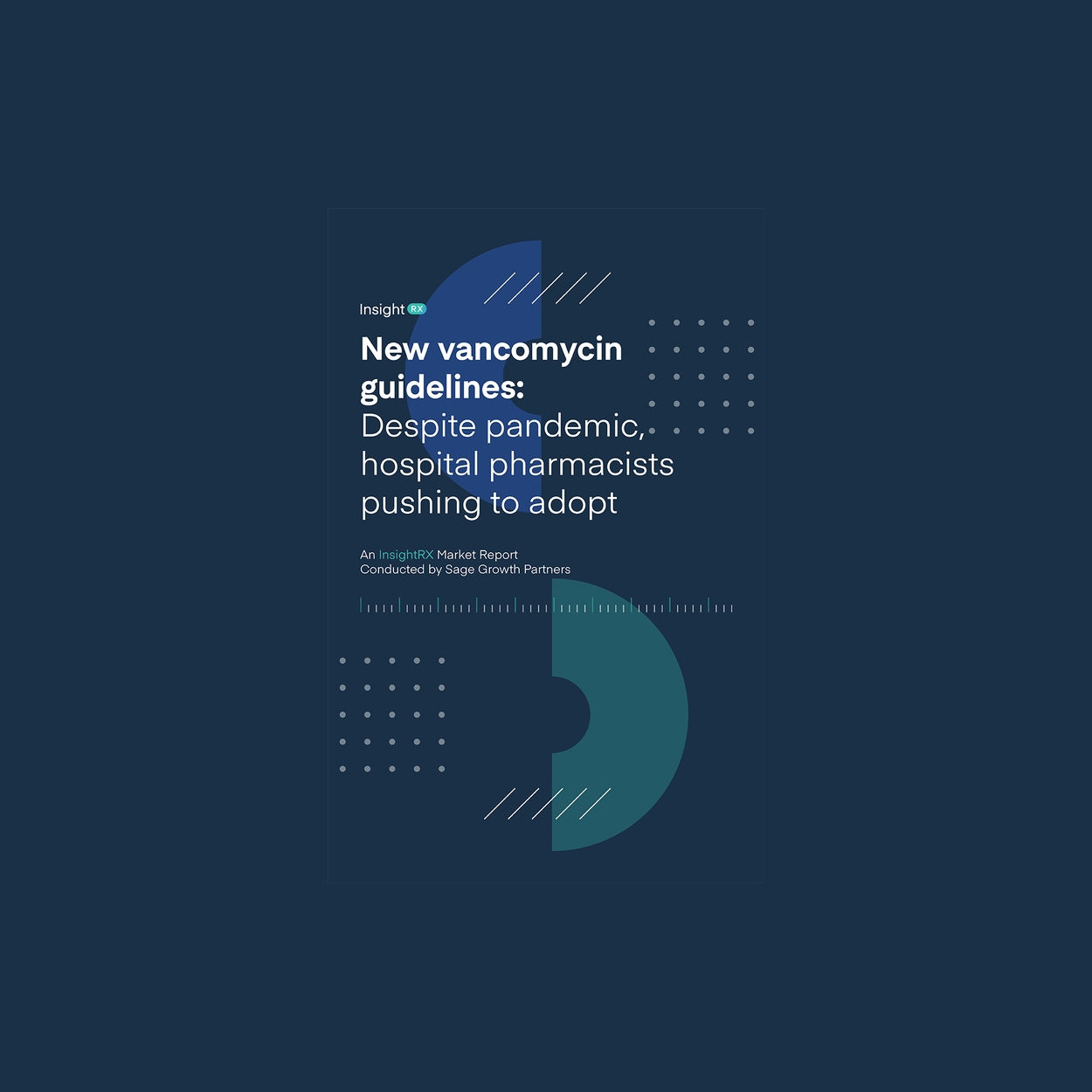

Pharmacy And Healthcare Professionals Nationwide Recognize Patient Safety Benefits Of New Consensus Vancomycin Dosing Guidelines, But Fewer Than One In Three Plan To Adopt Them
InsightRX's survey spotlights multiple benefits and key barriers to adoption of the first new consensus vancomycin dosing guidelines in more than a decade.
SAN FRANCISCO, July 8, 2020 — For the first time since 2009, consensus guidelines for vancomycin dosing were published in March 2020 by four pharmacy and infectious disease professional societies. The milestone marks a broad-based effort to reduce the incidence of acute kidney injury (AKI)—potentially fatal kidney failure or kidney damage—that can result from improper dosing of the antibiotic, as evidenced by a recent retrospective study found that 33% of 320 patients who received vancomycin sustained an AKI.
The new guidelines call for moving away from an older method called trough-based dosing and adopting an area-under-the-curve (AUC) approach to estimating vancomycin exposure, preferentially recommending the use of Bayesian software to estimate AUC. Bayesian software uses patient data and laboratory results to predict a patient’s ability to absorb, process, and clear vancomycin from his or her system. According to the findings of a survey released today by InsightRX, 98% of pharmacy and healthcare professionals nationwide said they personally believe that the new vancomycin guidelines are important for patient safety.
“Vancomycin, like many other medications, requires tailored dosing regimens to maximize patient efficacy and safety,” said InsightRX CEO Sirj Goswami, PhD. “The antibiotic is highly effective in combating infections caused by staph bacteria, but its effects vary significantly from person to person.”
In addition to patient safety, respondents to the InsightRX survey recognize both the cost and time savings that Bayesian software could present compared to manually estimating vancomycin exposure. More than half (54%) of respondents say that the Bayesian approach called for in the new guidelines can reduce overall costs and 45% say it can reduce lab expenditures. Nearly half (46%) say the Bayesian methodology can save pharmacist time compared to manual calculations.
However, despite their appreciation for the benefits of the new vancomycin guidelines, the overwhelming majority of respondents have not yet adopted them. 86% of respondents still use trough-based dosing, which the new consensus guidelines recommend be discontinued.
In addition, less than a third (31%) of respondents plan to adopt the new recommendations, while 60% are uncertain whether they will do so. Not having budgeted for Bayesian software, as well as being content with current vancomycin dosing methods, are the top two reasons for not shifting to AUC-guided dosing.
“Respondents are nearly unanimous in their personal belief that the new consensus guidelines are important for patient safety,” said Goswami. “However, their opinions are not translating to the adoption of an AUC-guided method in their own facilities.”
Other findings of the InsightRX survey include:
- Dosing drugs with narrow therapeutic windows, like vancomycin, is challenging. Respondents report significant challenges with existing dosing of vancomycin. Under- or over-dosing vancomycin (76%) and AKIs (62%) were listed as the top issues encountered when managing vancomycin therapy.
- Existing, trough-based vancomycin dosing relies heavily on professional judgment and manual tools rather than software. While the updated guidelines recommend automation to address several issues with the current approaches to determining therapeutic vancomycin dosing, estimation based on professional judgement (55%) and manual calculation methods (49%) are currently the most prevalent approaches for adjusting vancomycin dose based on drug levels.
- AKIs are an industry problem, but not a hospital or health system priority. While respondents agree that AKIs are an industry problem, most report it is not a problem in their hospital and is low on the priority list. 59% of respondents say that vancomycin-induced AKIs are not a problem in their hospitals, and AKIs ranked lowest among pharmacy challenges (8%) they face.
About the Survey
InsightRX commissioned an online survey of 126 healthcare professionals working in pharmacy and related roles in hospitals and health systems across the U.S. to assess their attitudes and behaviors regarding the newly released vancomycin dosing guidelines and related precision dosing topics. Conducted in April 2020, the survey has a margin of error of +/- 9%.
About InsightRX
InsightRX is a healthcare technology company that has developed a platform for precision medicine and clinical analytics designed to individualize treatment at the point of care. The platform leverages patient-specific data, pharmacology models, and machine learning to understand each patient’s unique pharmacological profile to guide treatment decisions.
For more information, please contact Travis Moon, tmoon@sage-growth.com.

